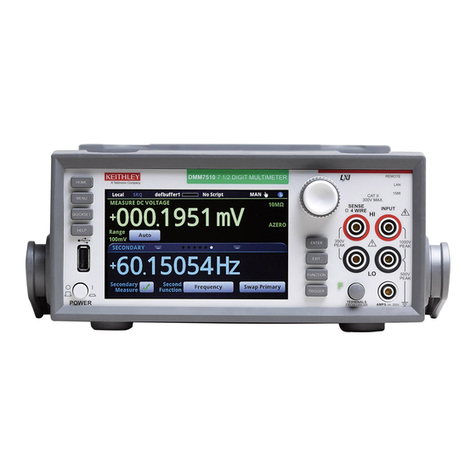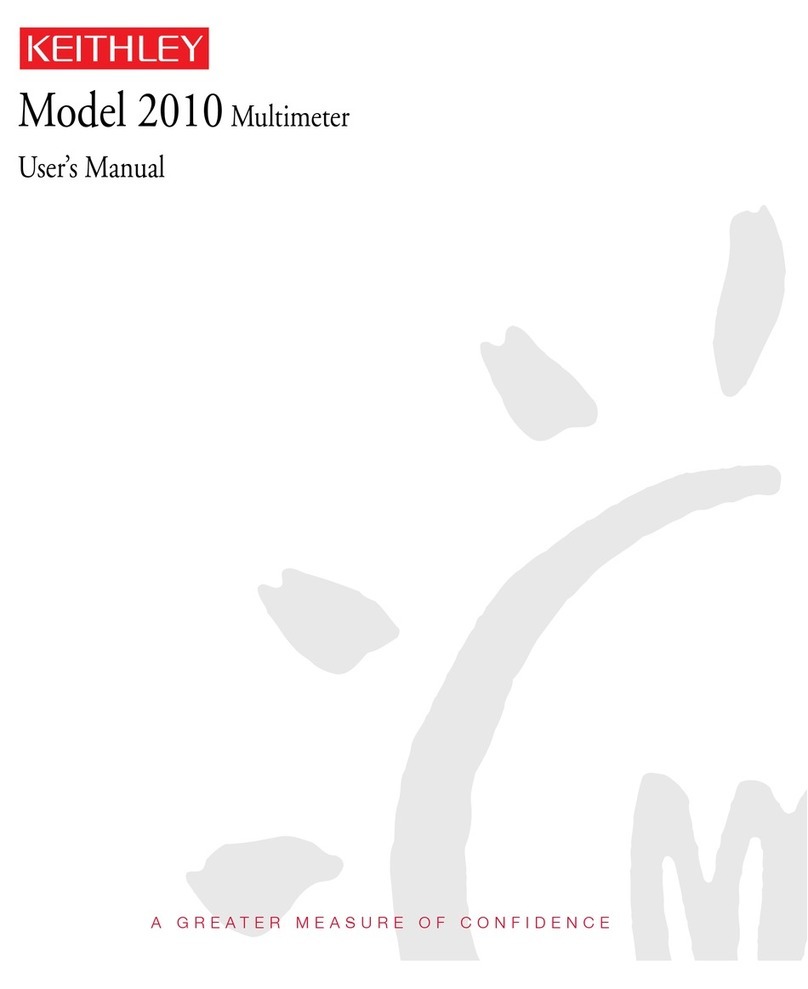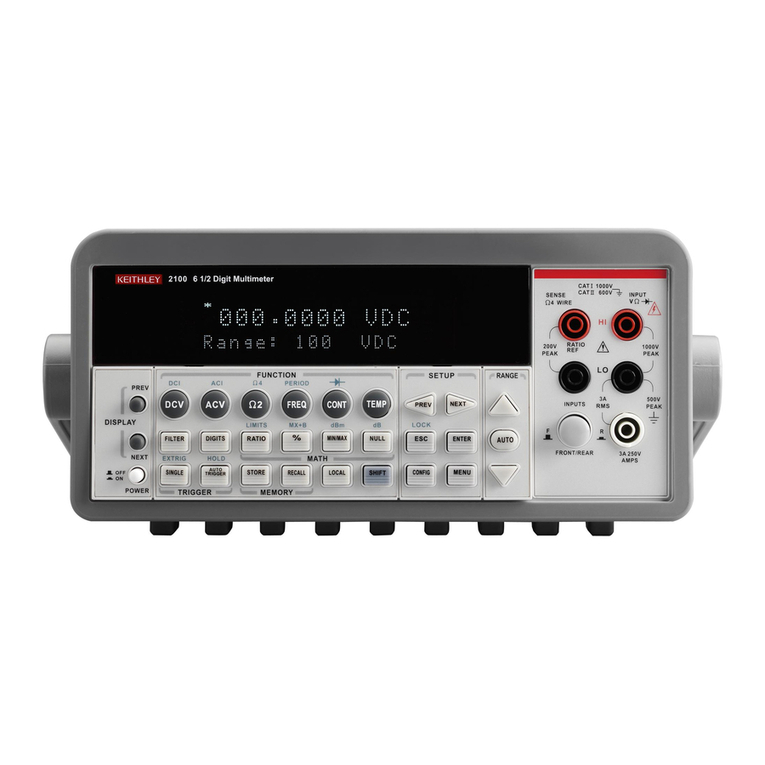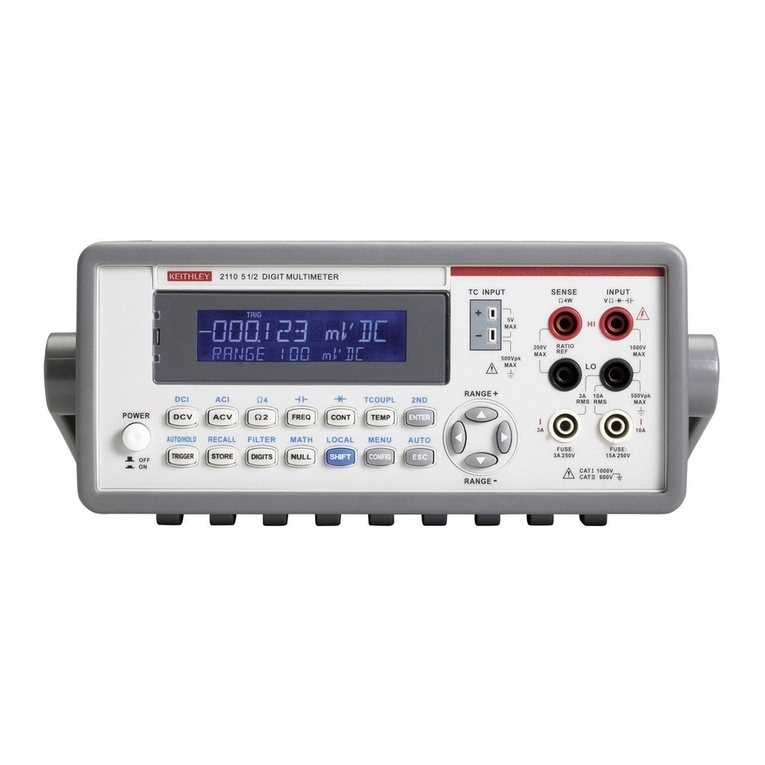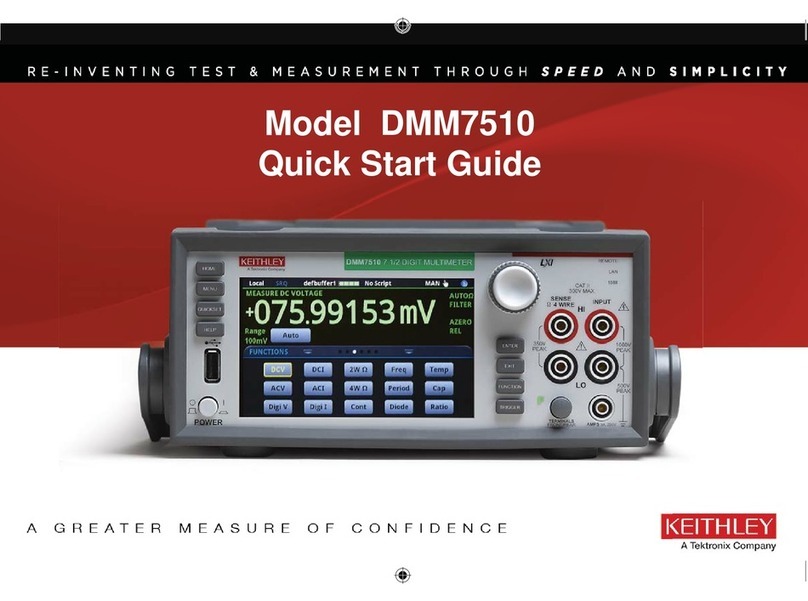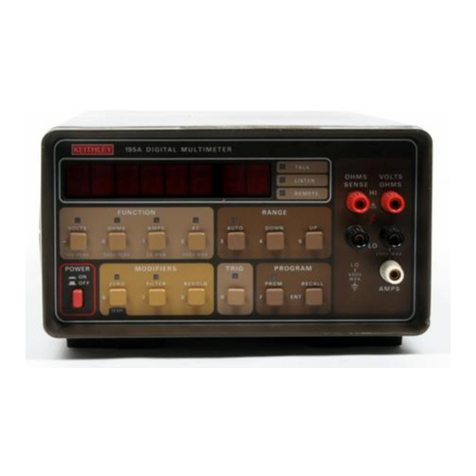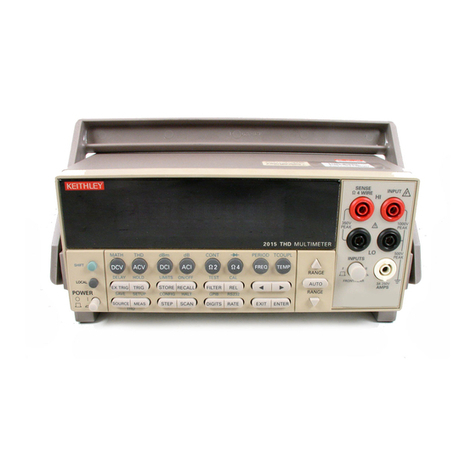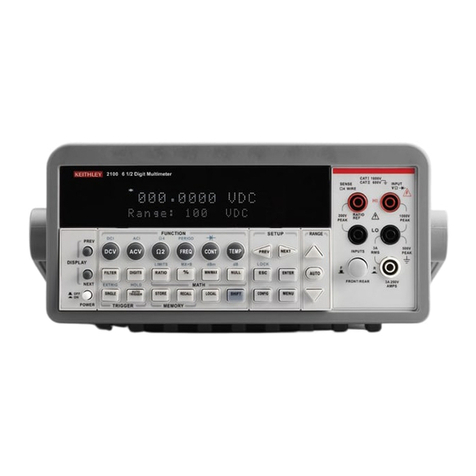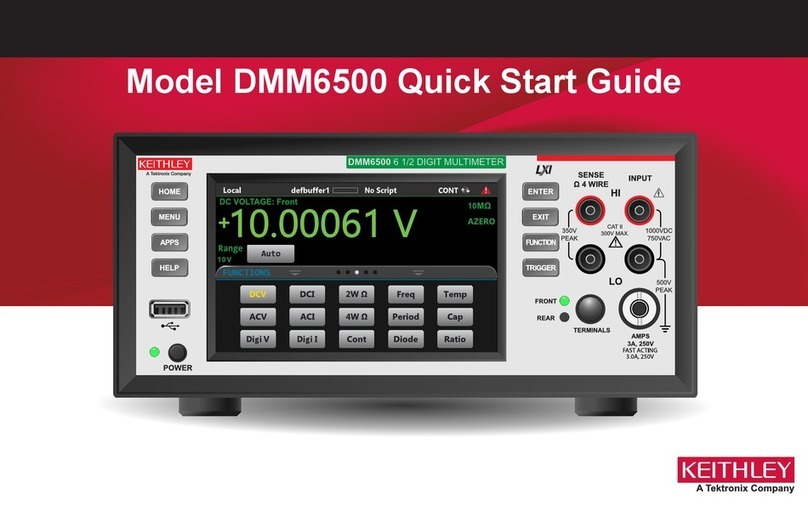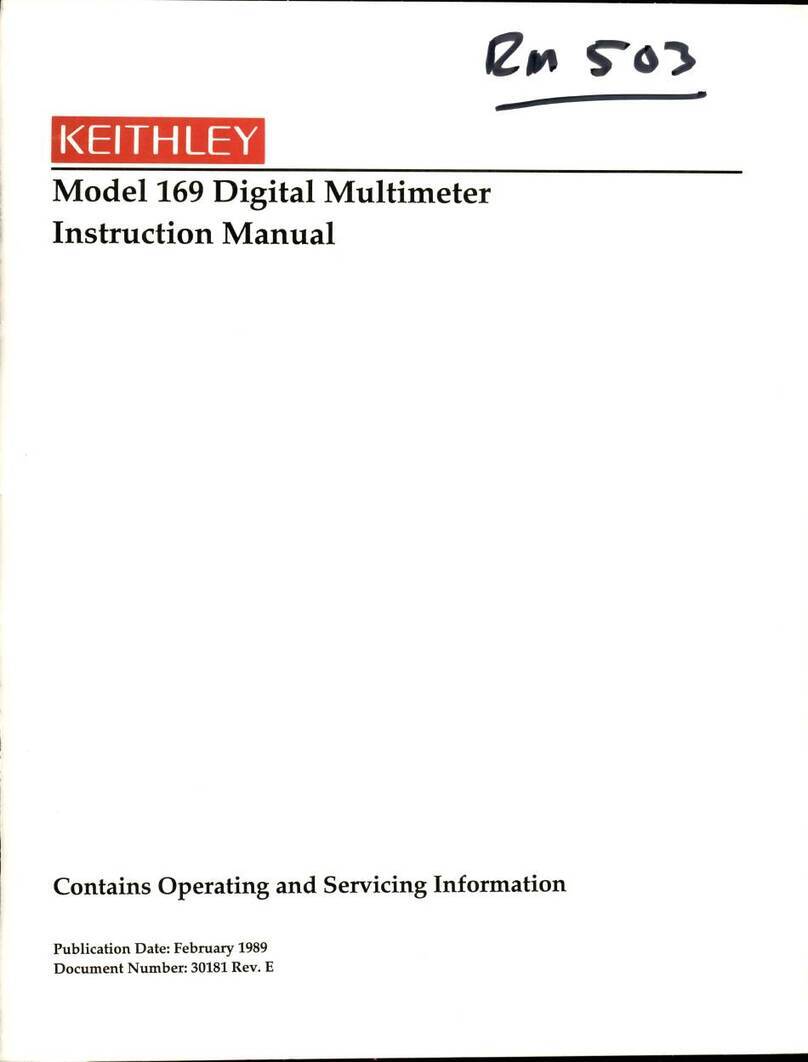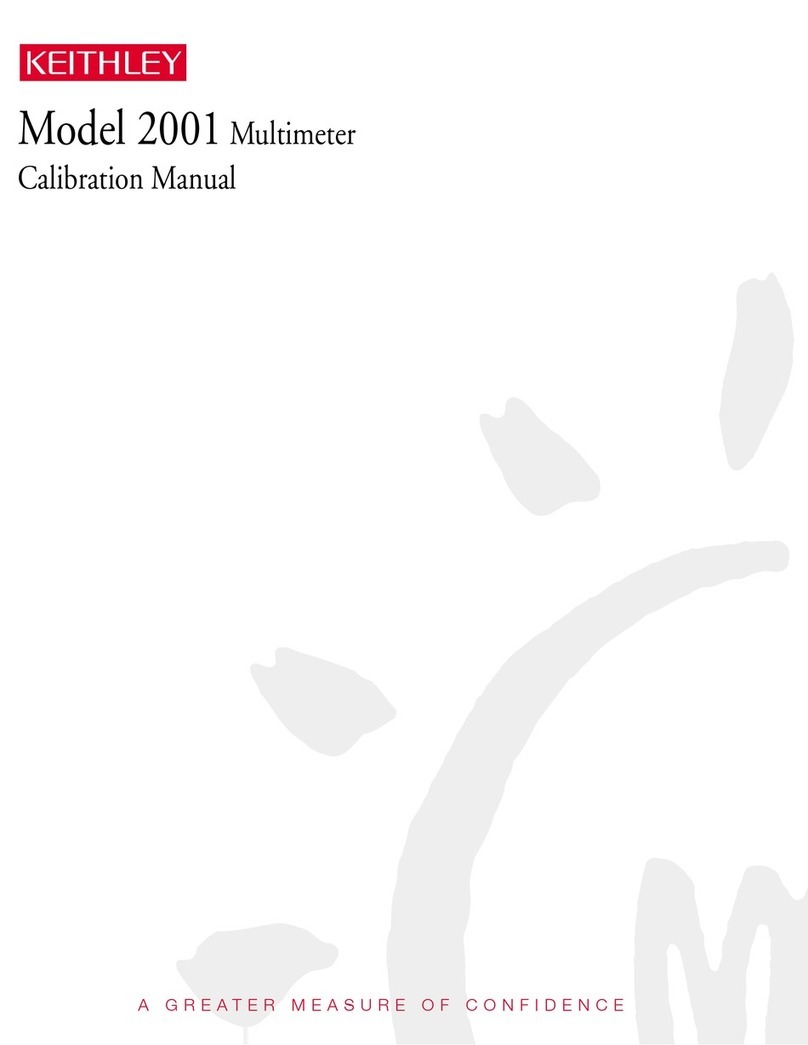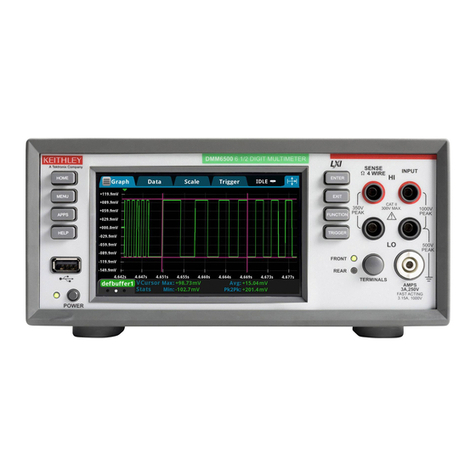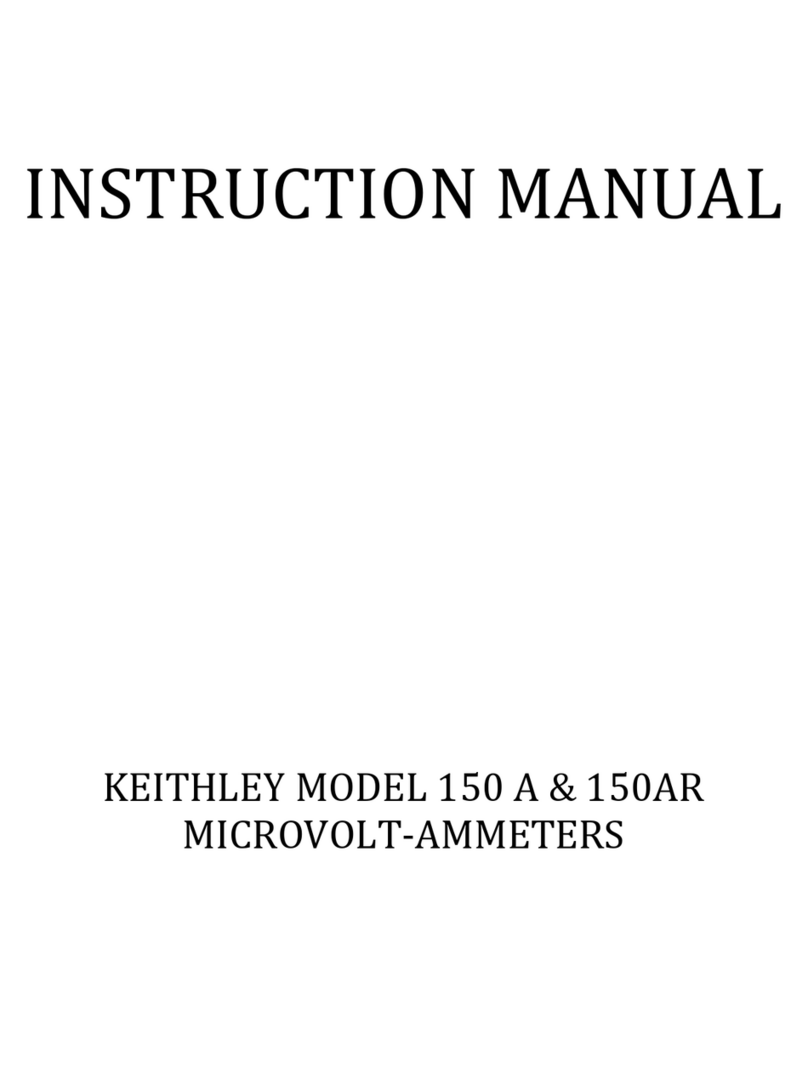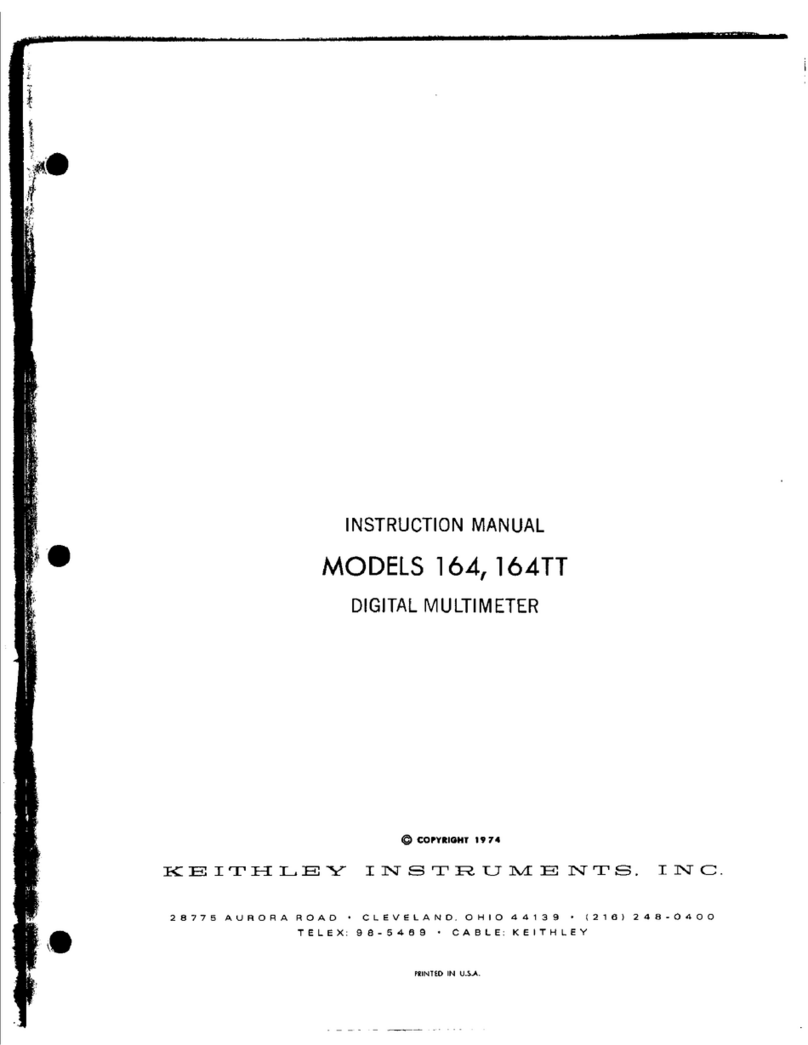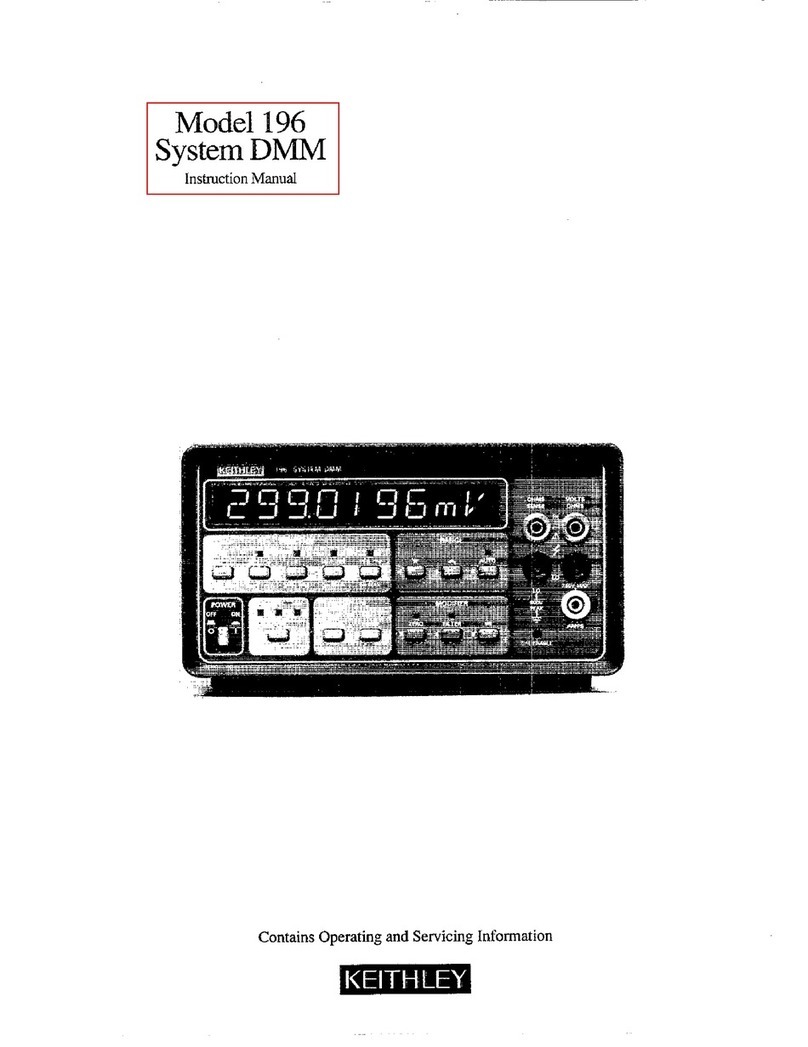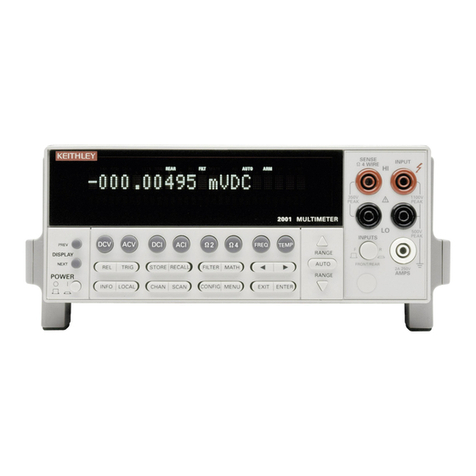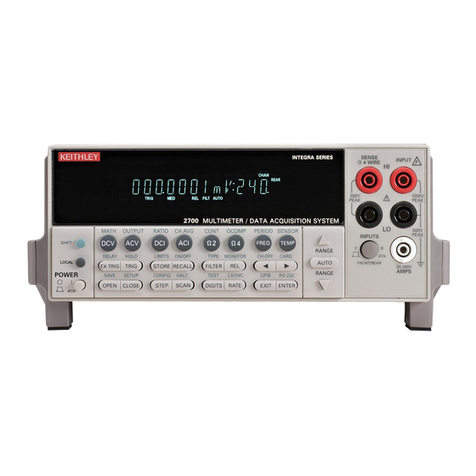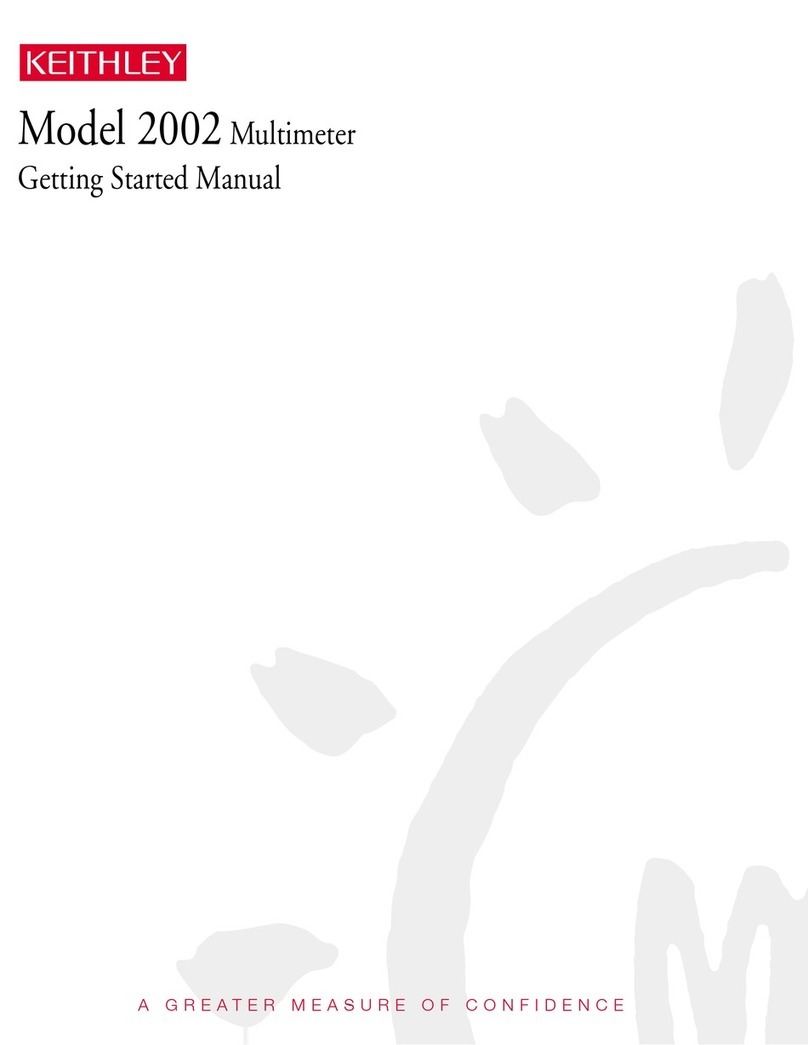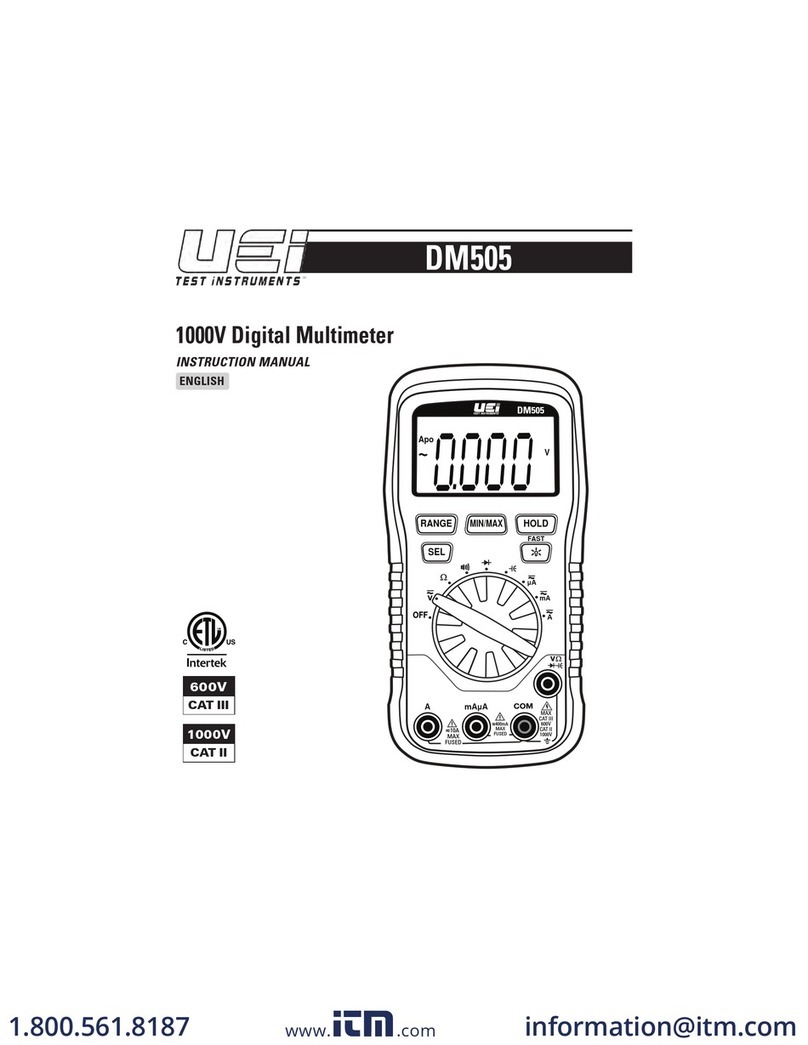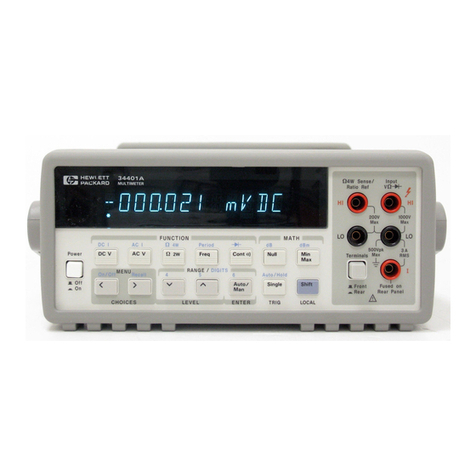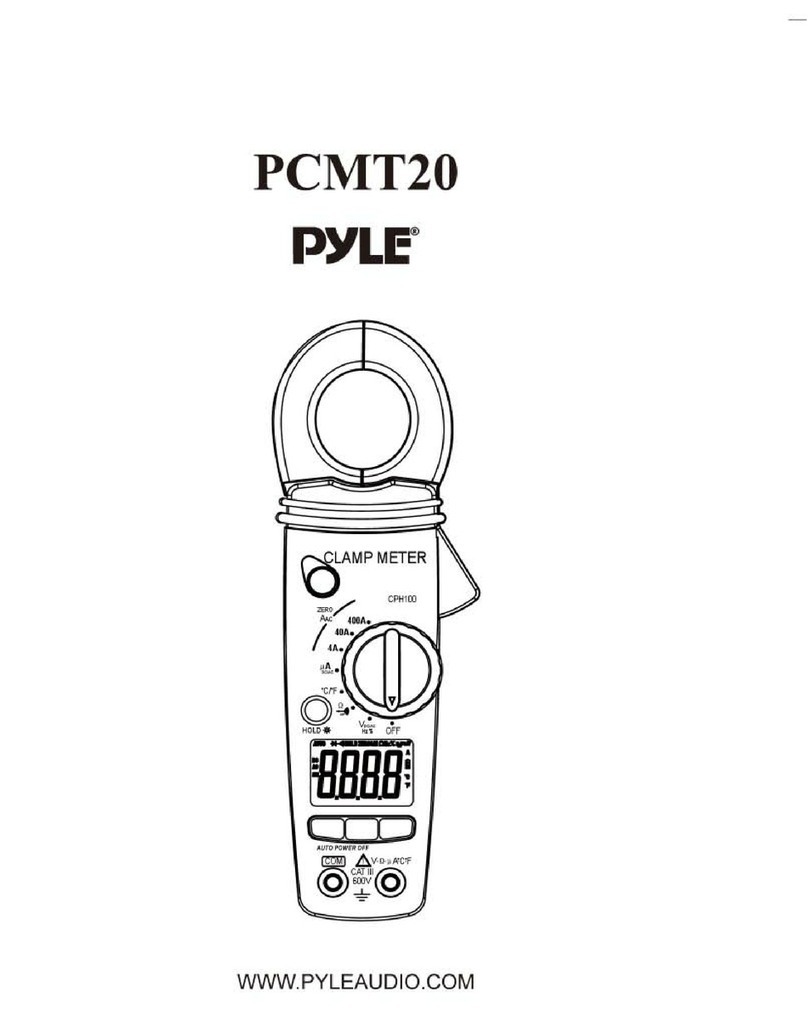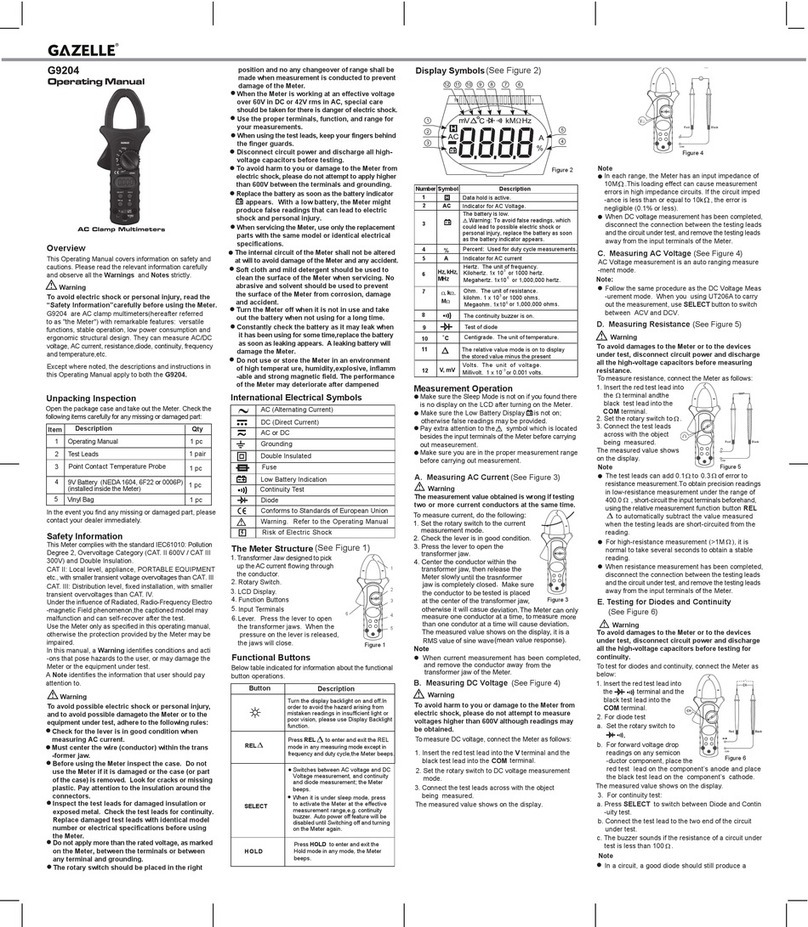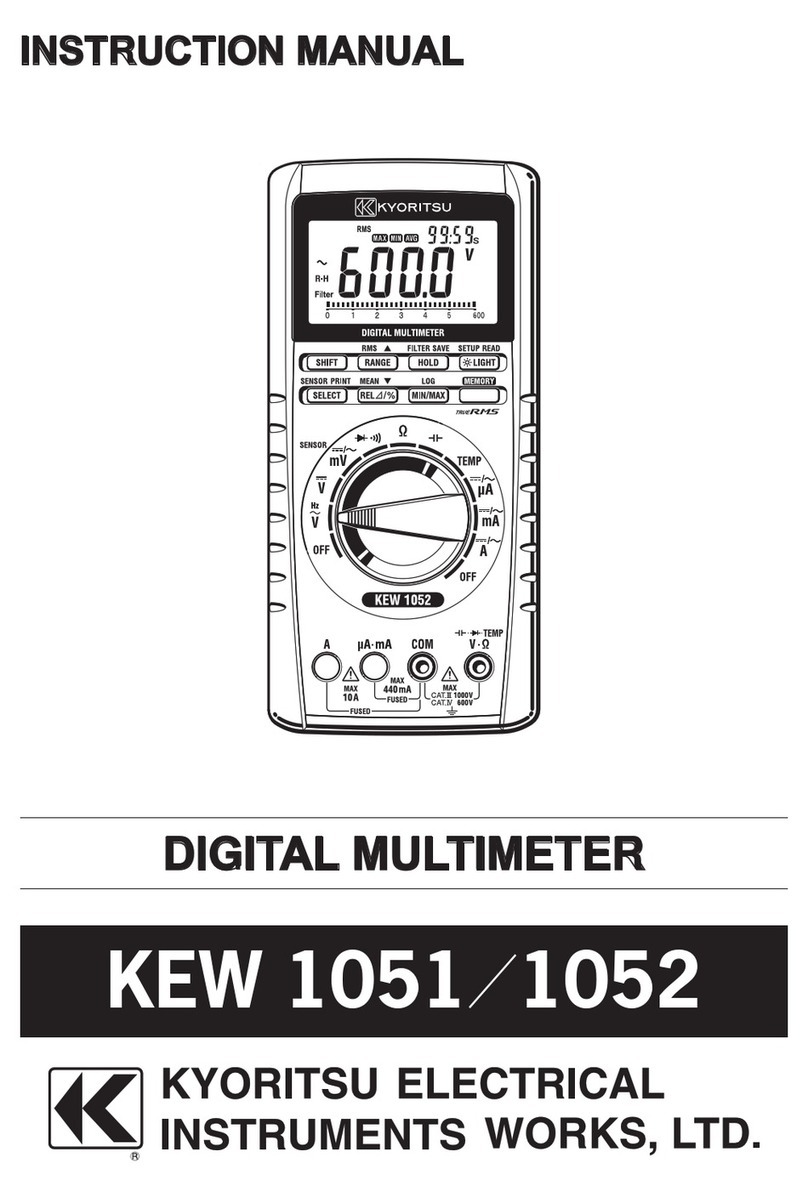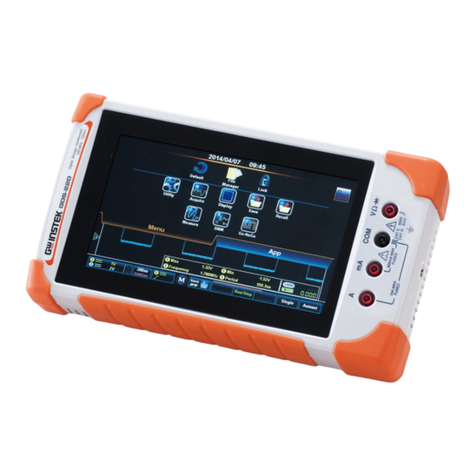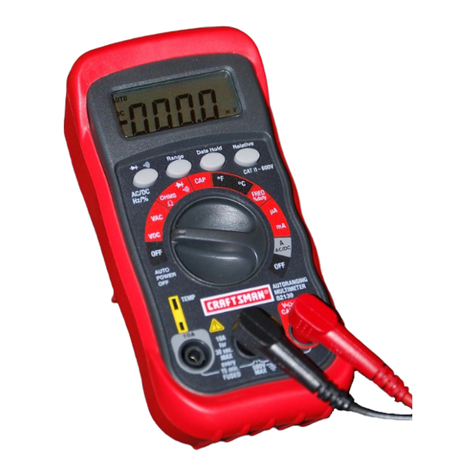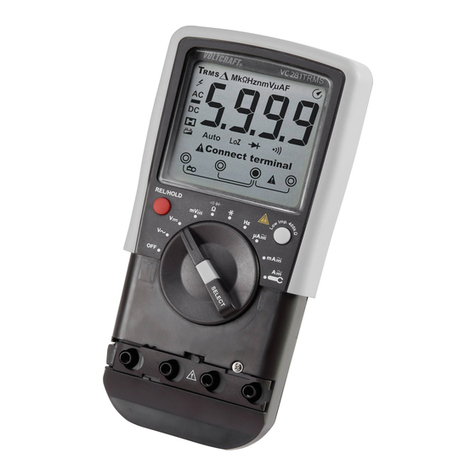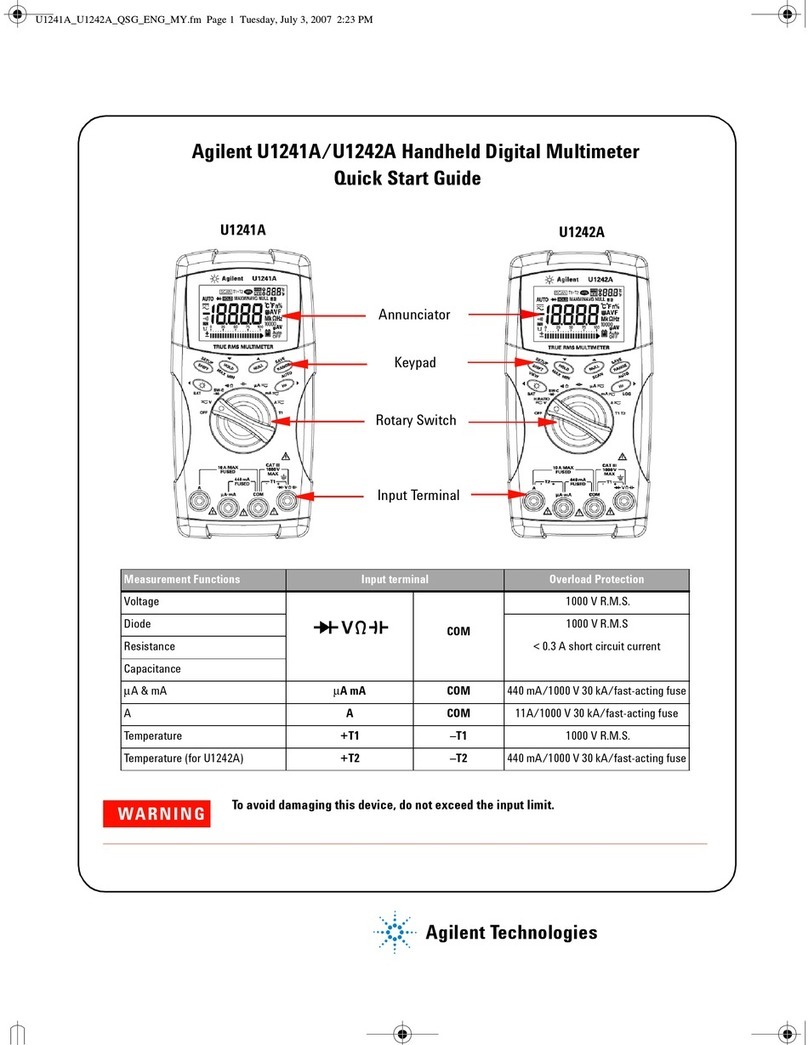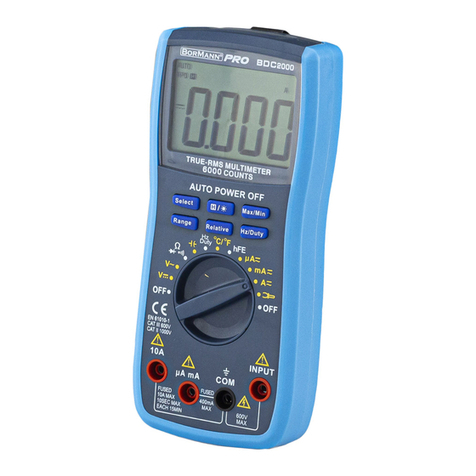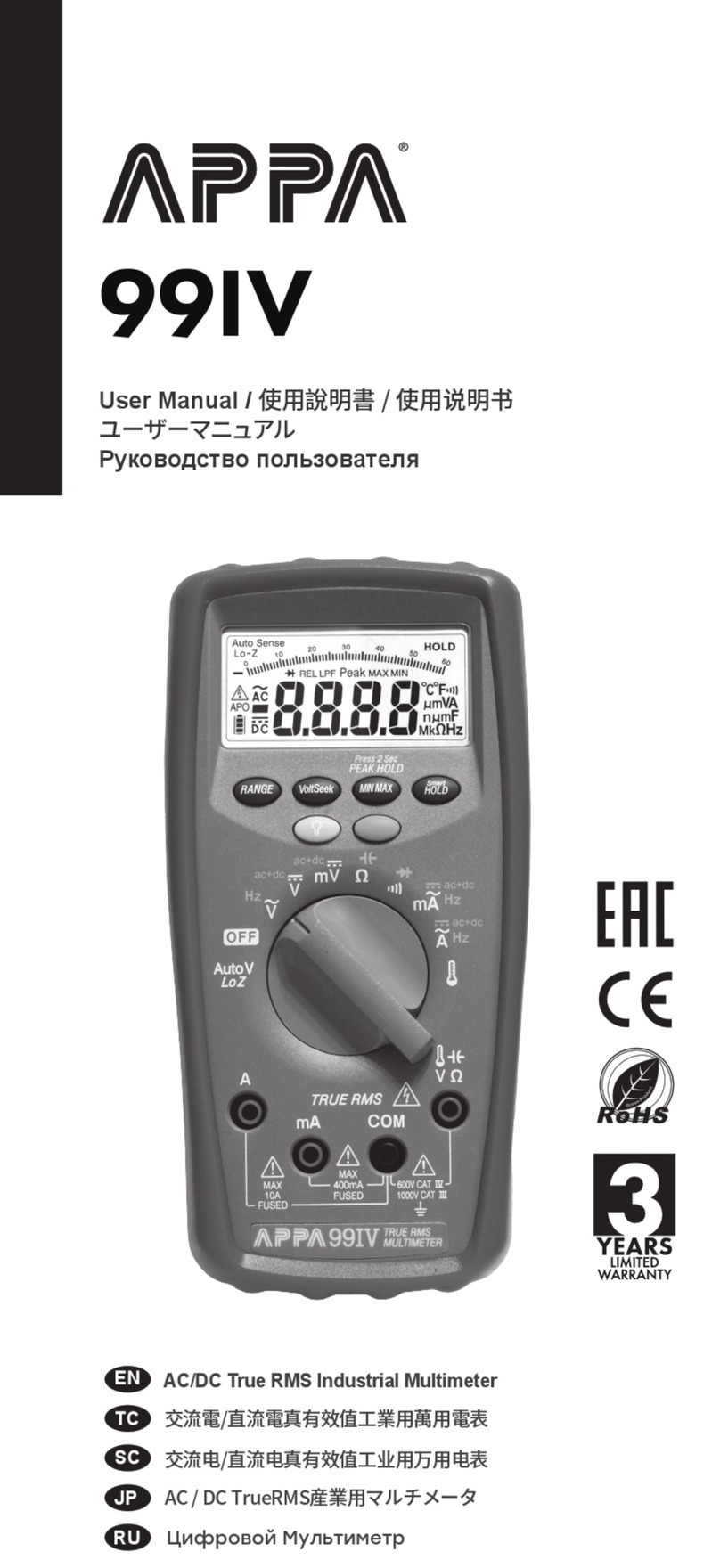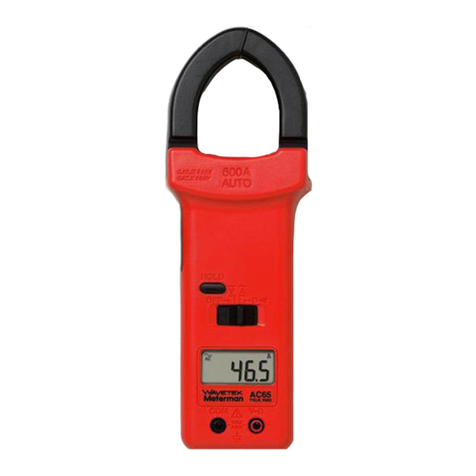
OPERATING INSTR”CTIONS MODEL 160B
d. HOWto "se the Model 1651 Current Shunt (for
meaS"remenfS to SOA). current measuremenf capability
Of the Model 160B may be extended to 50 amperes
through ctle use Of accessory Model 1651 SO-Ampere
shunt. The Model 1651 permits 4-terminal connections
to minimize meaeuremene error.ciue to lead resistance.
To use the Model 1651, connect the voltage sensing
leads eo the Model 160B input terminals. Connect
separate current leads (not furnished) beuveen xhe
source and the large hex-head bolts on the Model 1651.
The current leads should be rated for currents up to
50 amperes. me Shunt resistance is 0.001 ohm, vhich
produces a sensitivity of lmV/Amp. As examples, 10
amps current results in a lOIn" drop on 1Oln" RANGE,
and 30 amps yields a voltage drop Of 3Oln" which can
be read on the loom" RANGE. Power diss*paCed in the
shunt is 2.5 watts at 50 amperes.
3-8. NOISE CONSIDERATIONS. The 1imic of resolution
in voltage and current measurements is determined
largely by rhe noise generated in the source. stray
low-level noise is present in some form in nearly al1
electrical circuits. The instrument does not distin-
guish between stray and signal voltages since it meas-
ures the net "olfage. when using the lnl" and 1omv
ranges, consider the presence of low-level e1ectri-
cal phenomena such as thermocouples (thermoelectric
effect), flexing of coaxial cables (triboelectric
effect), apparent residual charges on capacitors
(dielectric absorption), and battery action Of t"O
terminals (galvanic action).
3-9. THERMAL EMFS. Thermal emfs (thermoelectric
potentials) are generated by thermal differences be-
tween two junctions of dissimilar metals. To mini-
mize the drift caused by thermal emfs, "se copper
leads to connect the circuie to the instrument. The
front panel ZERO control can be used to buck out a
cmstant thermal offset "aleage if necessary. The
Keithley accessory Model 1483 La" Thermal. Connecrio"
Kit contains all necessary materials for making very
low thermal copper crimp connections far minimizing
thermal effects.
3-10. MAGNETIC FIELDS. The presence of strong mag-
netic fields can be a potential sw.,rce of ac noise.
Magnetic flux lines which CUt a conductor can produce
large a-c noise especially at power line frequencies.
The voltage induced due to magnetic flux is propor-
tional fO the area enclosed by the circuit as well
as the rate of change of magnetic flux. For example,
the motion of a 3-inch diameter loop in the earth's
magnetic field Will induce a signal of several tenths
of a microvolt. one way to minimize magnetic pickup
is to arrange all wiring so that rhe loop area en-
closed is as small as possible (such as twisting in-
pur leads). A second way co minimize magnetic pickup
is to use shielding as described in Section 3-12.
3-11. AC ELECTRIC FIELDS. The presence of electric
fields generated by power lines or other sources can
have an effect on instrument operation. AC voltages
which are very large with respect to the full-range
sensitivity could drive the input amplifier into sat-
urarion, thus producing an errOneo"S DC OUtpUt. At
line frequency or twice line frequency, the insLru-
ment is capable of rejecting AC voltages whose peak-
to-peak amplitude is equal to the full-range DC sell-
sftivity on the loom" through 1OOOVranges. This
level of interfering AC signal will produce no more
than 1 digit error. On the lm" and 1OmV Ranges, the
instrumenf can reject line frequency and twice line
frequency signals whose p-p amplitude is equal CD 10
eimes the full-range sensitivity. Far example, on
rhe ID," Range, a 1OmVp-p, 50 Hz signal will produce
no more than 1~" (1 digit) DC erroi-. Peak-to-peak AC
voltages greater than 1x the full-range sensitivity
o,, the 1OOm" through 1000" ranges, the 10X the full-
range sensitivity on the lln" and 1omv ranges will
cause clipping in the AC section of the Model 160B
input amplifier. For this reason, shielding is re-
com,,,ended when making sensieive DC voltage measure-
menrs, or when making measurements from high so"rce
impedances. (See Shielding, Section 3-12.) The in-
serunlent is also capable of rejecting frequencies
other than power line frequencies. There is one pro-
blem to consider; however, the input amplifier of the
Model l6OB uses a modulator to convert DC signals LO
AC signals before amplification. The drive frequency
of this modulator is 220 HZ nominally, f approx. 5%.
Interfering AC signals with frequencies equal to the
modulator drive frequency, or mu1tipl.e~ fhereof, will
appear 8.3 modulated DC, and produce large DC errors.
3-12. SHIELDING.
a. Electric Fields. Shielding is usually necea-
8arv when the insrrument is in the eresence of verv
l&e a-c fields or when very sensi;ive measuremen;s
are being made. The shields of rhe measurement cir-
cuit and leads should be connecee* together to ground
at only one point. This provides a "tree" configura-
tion, which minimizes ground loops.
b. Magnetic Fields. Magnetic shielding 19 useful
where very large magnetic fields are present. Shield-
ing, which is available in ehe form of plates, foil
or cables, can be used to shield the measuring cir-
cuit, the lead wires, or the instrument itself.
C. Other Considerations.
1. Voltmeter Measurements. Use shielded input
leads when source resiseances are greater than 1
kilohm or when long input cables are used.
2. Current Measurements. On the mA and PA cur-
rent ranges, no special shielding precautions need
be taken. However, an the 100 and 10 nanoampcre
ranges, shielded input leads are recommended.
3. llesiatance Measurements. Shielding of input
leads and source are recommended for measurements
on the 10 megohm through 1000 megohm ranges to pre-
vent errOneO"S readings.
12 1174



















